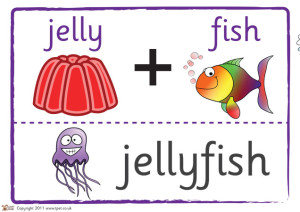
Often we think of science as uncovering a God’s-eye-view of the universe—dare I use the word objective? Sure, this may be the ultimate goal of some branches of science, but even in these cases, the road to God’s Eye is anything but monochromatic.
Our language colors the way we think. Words and phrases may reveal connections that would be invisible to speakers of other languages. (For a riveting exploration of human analogy-making, check out Doug Hofstadter and Emmanuel Sander’s 2013 book Surfaces and Essences.)
In science, then, scholars who speak and write in different languages may take vastly different approaches to solving problems. They may identify different problems, to begin with, but even in exploring the same problems as scholars in other languages, they may proceed differently. This is another reason why I am a proponent of linguistic diversity: These different approaches serve to enrich the human scientific enterprise.
A recent BBC article by Matt Pickles brings attention to the trend toward English-dominance in science, and academia in general. Higher education is becoming ever more Anglophone, as is scientific communication. We write in language, of course, and the way we write also interfaces with the way we think. From this series of perhaps-obvious observations, we can appreciate that language, writing and thought are intertwined. Because science advances through writing, the linguistic white-washing of scientific communication also serves to white-wash science itself. For instance, because international journals are unlikely to accept non-English quotations, authors who want to publish in these journals (often used as a measure of their success as researchers) may be coerced into subscribing to Anglophone theories and methods, as “nonstandard” approaches may not be deemed publishable.
The move toward all-English has an interesting historical parallel, drawn out in the article linked above. Centuries ago, science was written in Latin. A German campaign for scientific linguistic diversity reminds us that Galileo, Newton and Lagrange abandoned Latin in order to write in their vernacular. (We see the same in the literary world: Dante, for instance.) Professor Ralph Mocikat, a German molecular immunologist who chairs this campaign, says that the vernacular “is science’s prime resource, and the reintroduction of a linguistic monoculture will throw global science back to the dark ages.”
What can be done to foster linguistic diversity in science? Because of all the machinery involved, it will surely be a slow process. But it has to start somewhere. Here are a few ideas that come to mind:
- For academic institutions:
- Require second-language proficiency in all PhD students.
- Find ways to facilitate searching the literature in other languages.
- For journals:
- Allow space for translations of papers, perhaps one article per issue, or perhaps in an annual special issue of translations.
- Publish abstracts in multiple languages, even if the content itself is only in one language.
- Provide translation services to facilitate access of academic work in other languages.
- Broaden your base of peer reviewers to include researchers with other native languages.
- For researchers:
- Participate in international conferences, particularly smaller ones. Talk to researchers in your field whose native language is not English.
- If you don’t speak another language, start learning one. It’s easier than you think. If you do, search the literature in that language the next time you write a paper.
What else?
Update: This post spawned an interesting conversation on Facebook with a few of my friends. When assessing this trend, we should also consider the needs and values of specific fields. Though I stand by the above discussion for the kind of research I do (humanities and “soft” sciences), a linguistic monoculture could indeed be valuable for certain work in the natural sciences. Clarity means safety, as a friend who works with dangerous chemicals said. Moreover, using one standardized term for a phenomenon rather than a panoply of regionalisms has benefits, such as making a literature search easier.
Thanks to Dr. Deborah Turner for bringing the BBC article to my attention.







